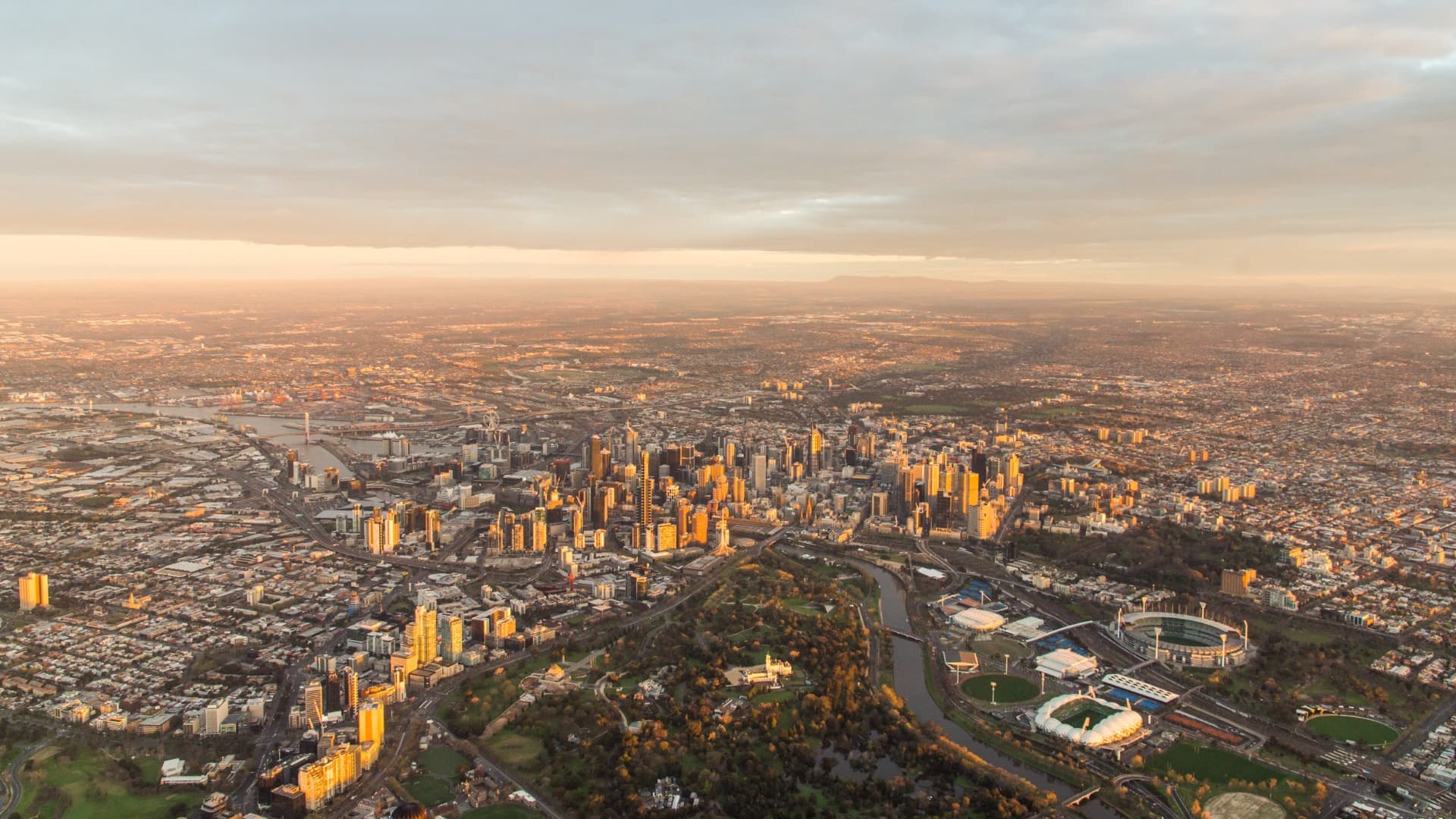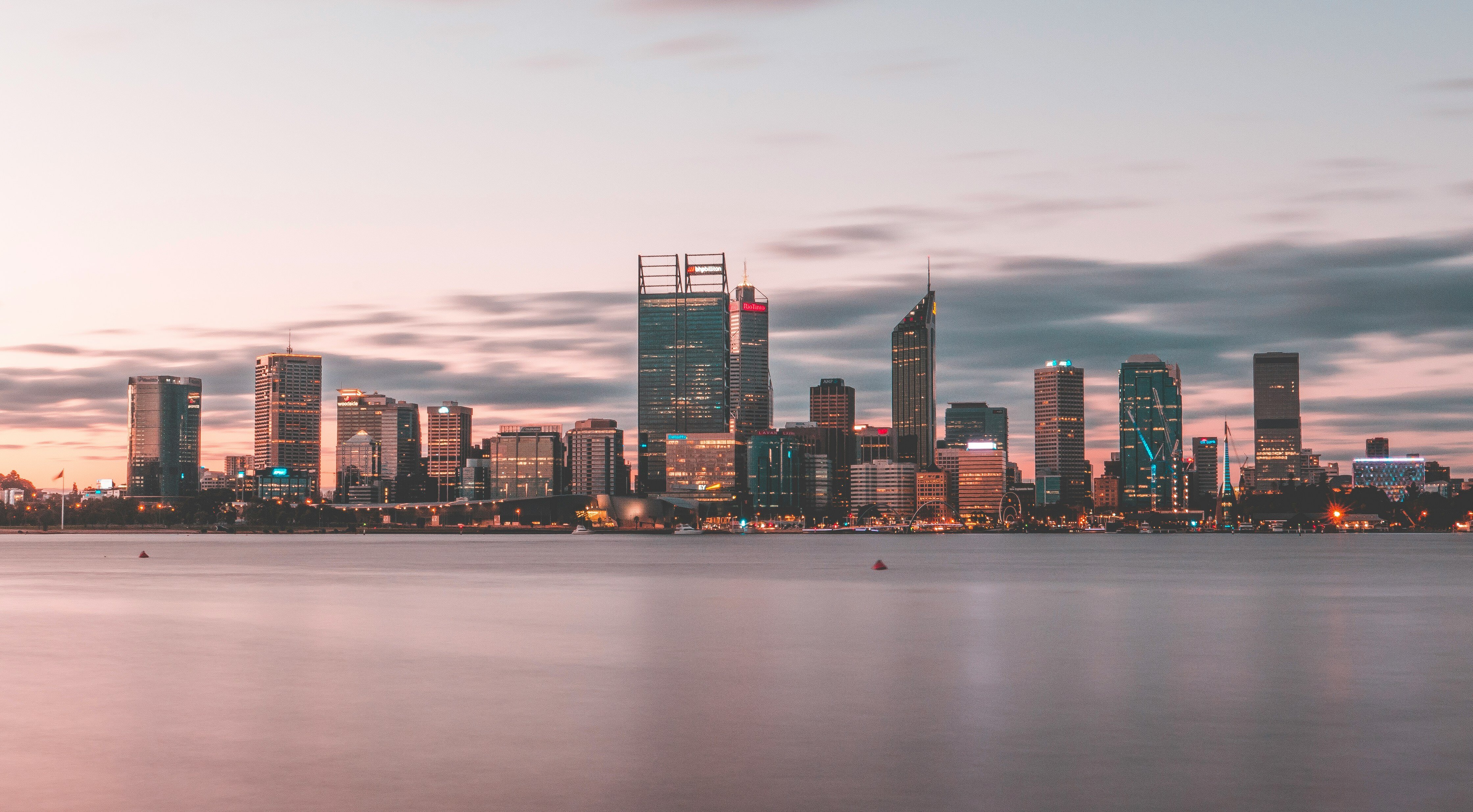Demographer Glenn Capuano provides the latest update to the top 50 cities and towns in Australia.
This is the 2025 update to .id's most popular and enduring blog series of all time - “Top 50 cities and towns in Australia”. Everyone loves a league table, and this list shows the largest 50 urban areas in Australia by the Significant Urban Area measure, using population data from the ABS for the year to June 30th 2024.
This is one of a few measures that use the urban extent (built up area) of a city to define its boundaries. While some outlying rural areas are included, they must be within 5km of a built up area to qualify. Generally the Significant Urban Area measure is smaller than the "Greater Capital City Statistical Division" which we use to benchmark all our major cities LGAs on community profile. But it equates better with what most people would understand as an urban area - and also applies to smaller centres outside of our major cities.
Top 50 cities in Australia by population, June 30th 2024
| Rank |
Significant Urban Area - State |
2024 preliminary ERP |
5 year change % |
1 year change % |
| 1 |
Melbourne Vic |
5,245,182 |
6.9% |
2.8% |
| 2 |
Sydney NSW |
5,143,256 |
5.9% |
2.0% |
| 3 |
Brisbane Qld |
2,693,649 |
11.1% |
2.7% |
| 4 |
Perth WA |
2,363,562 |
12.8% |
3.1% |
| 5 |
Adelaide SA |
1,449,366 |
7.1% |
1.5% |
| 6 |
Gold Coast - Tweed Heads Qld-NSW |
750,997 |
10.1% |
2.1% |
| 7 |
Newcastle - Maitland NSW |
534,033 |
7.7% |
1.4% |
| 8 |
Canberra - Queanbeyan ACT-NSW |
510,641 |
8.0% |
1.5% |
| 9 |
Sunshine Coast Qld |
417,982 |
12.9% |
2.5% |
| 10 |
Central Coast NSW |
351,237 |
2.6% |
0.8% |
| 11 |
Wollongong NSW |
318,258 |
5.2% |
1.5% |
| 12 |
Geelong Vic |
308,915 |
11.5% |
2.3% |
| 13 |
Hobart Tas |
233,592 |
4.9% |
0.4% |
| 14 |
Townsville Qld |
189,356 |
5.1% |
1.4% |
| 15 |
Cairns Qld |
163,214 |
6.0% |
1.4% |
| 16 |
Toowoomba Qld |
152,087 |
8.3% |
1.5% |
| 17 |
Darwin NT |
138,567 |
3.6% |
0.9% |
| 18 |
Ballarat Vic |
119,284 |
10.5% |
2.5% |
| 19 |
Bendigo Vic |
106,022 |
5.3% |
1.1% |
| 20 |
Albury - Wodonga NSW-Vic |
101,370 |
6.5% |
1.3% |
| 21 |
Launceston Tas |
93,194 |
3.0% |
-0.3% |
| 22 |
Mackay Qld |
89,193 |
7.7% |
1.2% |
| 23 |
Rockhampton Qld |
82,876 |
4.6% |
1.2% |
| 24 |
Bunbury WA |
82,626 |
7.6% |
1.5% |
| 25 |
Bundaberg Qld |
78,626 |
7.8% |
1.8% |
| 26 |
Coffs Harbour NSW |
76,479 |
4.5% |
0.9% |
| 27 |
Hervey Bay Qld |
62,184 |
10.4% |
2.2% |
| 28 |
Wagga Wagga NSW |
57,963 |
1.8% |
0.3% |
| 29 |
Shepparton - Mooroopna Vic |
55,212 |
3.8% |
1.3% |
| 30 |
Mildura - Buronga Vic-NSW |
54,510 |
2.4% |
0.2% |
| 31 |
Port Macquarie NSW |
52,661 |
8.2% |
1.3% |
| 32 |
Gladstone Qld |
48,021 |
5.5% |
1.5% |
| 33 |
Ballina NSW |
47,844 |
6.6% |
1.4% |
| 34 |
Warragul - Drouin Vic |
46,710 |
17.6% |
2.5% |
| 35 |
Tamworth NSW |
45,878 |
4.5% |
0.9% |
| 36 |
Busselton WA |
44,881 |
11.9% |
2.3% |
| 37 |
Traralgon - Morwell Vic |
44,013 |
3.4% |
0.6% |
| 38 |
Orange NSW |
42,977 |
3.5% |
0.8% |
| 39 |
Bowral - Mittagong NSW |
42,278 |
4.6% |
0.7% |
| 40 |
Dubbo NSW |
42,112 |
5.6% |
0.8% |
| 41 |
Geraldton WA |
41,540 |
6.2% |
1.1% |
| 42 |
Nowra - Bomaderry NSW |
40,056 |
5.6% |
0.9% |
| 43 |
Bathurst NSW |
38,642 |
4.6% |
0.8% |
| 44 |
Albany WA |
37,571 |
6.3% |
1.4% |
| 45 |
Warrnambool Vic |
36,496 |
3.0% |
0.7% |
| 46 |
Devonport Tas |
32,932 |
4.5% |
0.2% |
| 47 |
Kalgoorlie - Boulder WA |
30,719 |
1.0% |
0.6% |
| 48 |
Mount Gambier SA |
30,663 |
2.5% |
0.3% |
| 49 |
Morisset - Cooranbong NSW |
30,459 |
15.2% |
3.5% |
| 50 |
Victor Harbor - Goolwa SA |
30,324 |
10.9% |
1.7% |
Yes, Melbourne is larger than Sydney by this measure - and the gap has widened a little to just over 100,000.
By the more commonly used Greater Capital City measure (a wider area), Sydney remains the larger city with 5.56m to Melbourne's 5.35m. This is primarily because Greater Sydney includes the Central Coast, while the Sydney SUA does not. And if you were to add in Newcastle and Wollongong to Sydney - to get a ~150km radius (still predominantly urban), while similarly adding Geelong to Melbourne - Sydney is bigger by over 600k).
Since the last update two years ago, there is surprisingly little change in the rankings of this list. The top 50 is fairly stable.
- Only Alice Springs has dropped out (to #51) replaced by Morisset - Cooranbong in the Lake Macquarie area entering at #49 and the largest percentage increase of any area in the list over the past 5 years.
- You need to go all the way down to #32 in the list to find any change in the rankings since 2022. Gladstone and Ballina have swapped places, and just below this, Warragul-Drouin has just gone ahead of Tamworth while Busselton has gone ahead of Traralgon-Morwell.
- Gold Coast-Tweed has hit three quarters of a million people and is on track to be our 6th million-city - though this is likely to take another 10 years.
- Victor Harbor-Goolwa is likely to become the 2nd largest urban centre in South Australia in the next two years - overtaking Mount Gambier, which itself overtook Whyalla a few years back (no longer in the top 50).
- The previous version of this list had some boundary changes which caused areas to shift significantly due to including more population. Melton, which was previously included was subsumed into Melbourne's population in 2022, and Ballina was expanded. There are mininimal boundary changes in the 2024 version, hence the rankings don't alter much, despite uneven population growth.
These top 50 cities comprise 22,830,210 people. 84% of the total population of Australia live in these 50 cities which illustrates just how urbanised the nation is! 38% live in just the top 2 and 62% in the top 5.
That's an incredible increase of over 1.1 million in two years, and 94% of Australia's population growth.
Notably, NONE of these areas have fallen in population over 5 years, and only ONE has fallen over the last 1 year (Launceston, Tas).
States/Territories by number of cities in the top 50, 2024
| State/Territory |
Cities in the top 50 |
| NSW |
18 |
| Vic |
10 |
| Qld |
12 |
| SA |
3 |
| WA |
6 |
| Tas |
3 |
| NT |
1 |
NSW has the greatest number of cities in the top 50, followed by Qld and Vic. Note that this table adds up to 53 - due to the border crossing urban areas which are in multiple states.
Estimated Resident Population for 2024 has now been updated on all the .id sites. You can see our LGA summary on the Demographic Indicators page. While we don’t use the Significant Urban Area classification much, detailed population information by suburb, town and custom areas is in the community profiles for all subscribing places.
If you’re interested in adding a community profile for your area, please contact us via demographics@id.com.au.
Where will grow next?
This is how the population has changed - but where will it grow next? Read the latest analysis from our forecasters for your region here, or visit our National Forecasting Program to learn more or contact our team to request our latest forecasts for your suburb or a custom catchment area.
.id (informed decisions) is a company of geographers, demographers, economists, spatial analysts, urban planners, forecasters, census data and IT experts. We understand places and how they change. We provide online tools and consulting services to local government and industry partners to inform place-based decisions. Access our free resources.









